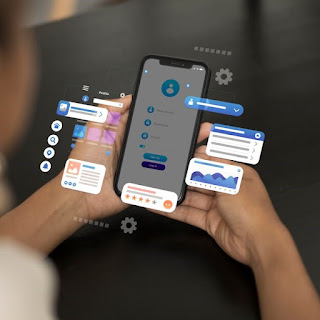The Future of Mobile App Development: Trends and Technologies Shaping the Industry
Mobile app development has transformed how we interact with technology, offering innovative solutions to everyday challenges and new business opportunities. As technology evolves, so do the trends and tools that shape the industry.
According
to a report by Statista, mobile apps generated over $581 billion in revenue in
2020 and are projected to surpass $935 billion by 2023.
As
businesses seek innovative ways to connect with users, staying updated on the
latest developments is crucial. In this blog, we'll explore the key trends and
technologies driving the future of mobile app development, focusing on how
every software Development Company can adapt to these changes to
remain competitive and deliver high-quality applications.
This
blog explores the future of mobile app development, highlighting key trends and
emerging technologies that every software development company should consider.
- AI and Machine Learning
Integration
Artificial
intelligence (AI) and machine learning (ML) are increasingly becoming core
components of mobile apps. From personalized recommendations to voice
assistants, these technologies enhance user experiences and automate tasks. An
IT software development company that leverages AI/ML can create more innovative
applications that adapt to user behavior and provide real-time insights.
Consider how AI-driven Chatbots and virtual assistants are revolutionizing customer service. Natural language processing (NLP) allows these apps to understand and respond to user queries, offering instant support and reducing the burden on human agents. This trend will continue growing, with more complex AI capabilities integrated into mobile apps.
2. Cross-Platform Development
Gone
are the days when mobile apps were strictly tied to a single platform.
Cross-platform development tools, like Flutter and React Native, enable
developers to create applications that work seamlessly on iOS and Android.
A
custom software development company specializing in cross-platform
development can reduce costs and time-to-market for clients, offering
consistent experiences across multiple platforms.
This trend also opens the door to hybrid apps that combine native and web-based components, providing flexibility and scalability. With cross-platform development gaining momentum, businesses can reach broader audiences with less effort.
3. 5G Connectivity and Edge Computing
The
rollout of 5G networks is set to transform mobile app development by enabling
faster data transfer, lower latency, and enhanced connectivity. This
advancement opens the door to real-time applications, augmented reality (AR),
virtual reality (VR), and the Internet of Things (IoT). An IT support and
services company that understands 5G technology can help businesses create apps
that leverage these new capabilities.
Edge computing is another trend that complements 5G by processing data closer to the source, reducing latency, and improving efficiency. This technology allows mobile apps to deliver faster responses and enhanced user experiences, making it a critical consideration for future development.
4. Focus on Security and Privacy
As
mobile apps handle more sensitive information, security and privacy become
paramount. A software development company must prioritize secure coding
practices, data encryption, and compliance with regulations like GDPR and CCPA.
Users demand applications that protect their data, and businesses must meet
these expectations to maintain trust.
The future of mobile app development will likely see increased use of biometric authentication, secure data storage, and advanced encryption techniques. By incorporating robust security measures, companies can build apps that users feel confident using.
5. Augmented Reality and Virtual Reality Applications
Augmented
Reality (AR) and Virtual Reality (VR) are making significant strides in mobile
app development, offering immersive experiences that engage users in new and
exciting ways. According to MarketsandMarkets, the AR and VR market is
projected to grow from $28 billion in 2021 to over $250 billion by 2028,
indicating a massive potential for these technologies in various industries.
AR
and VR applications are expanding their reach from gaming and entertainment to
education and training. Businesses can use AR for product visualization,
virtual tours, or interactive marketing, while VR can create immersive
simulations for training and development. A software development company incorporating AR and VR into its
mobile app projects can offer innovative solutions that set clients apart.
Integrating
AR and VR allows mobile apps to create unique user experiences that drive
engagement and customer satisfaction. This trend is expected to gain traction,
with more companies exploring these technologies to enhance mobile
applications.
Embracing the
Future of Mobile App Development
The
future of mobile app development is bright, with exciting new trends and
technologies. Whether integrating AI and ML, adopting cross-platform
development, leveraging 5G connectivity, or focusing on security, the industry
is poised for innovation. An IT software development company that stays ahead of these trends
can help businesses create successful, future-ready mobile apps.
As
the landscape evolves, embracing these trends will be crucial for success. To
develop a mobile app that stands out in this dynamic environment, partnering
with a custom software development company that understands the latest trends
and technologies is critical. The journey to a more connected, efficient, and
secure mobile app future starts now.
Why
keep up with 2024's tech trends when you can lead the way? At the crossroads of
innovation and efficiency, elevate your operations with our comprehensive
Managed IT support and services. Ensure robust security,
streamline your processes, and scale your business effortlessly.
Connect
with us at info@ideas2goal.com today
to start your journey toward operational excellence. Don't just follow
trends—set them.





Comments
Post a Comment